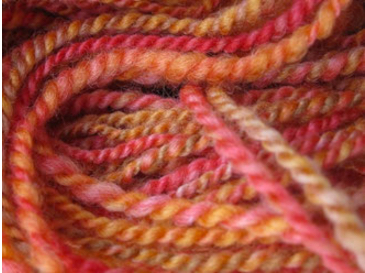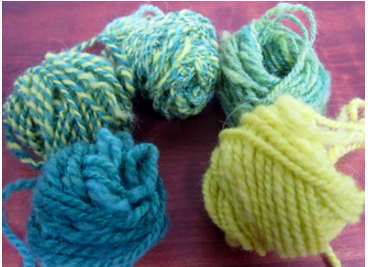One of the many reasons I am a biologist, not a chemist
I've recently been playing around with a couple of new colorways for the October update (as well as a couple of new fibers). One of my experiments resulted in this lovely Southdown - I think this will spin up into a really gorgeous, tinted yarn. I'm hoping the purples and blues and greys will blend together well with the undyed sections of fiber.
So I figured I had a winner, and set off to replicate the colorway on some Cheviot. I've been working really hard to keep good notes on all my colorways so they can be reproduced - this is one of my key selling points for custom dye orders - so I checked my notes and off I went. Sadly, the vagaries of chemistry conspired against me.
I don't know how well you can tell from these photos, but this fiber, while still very pretty, is predominantly brown, with hints of blue and purple.It is defnitively NOT blue/purple/grey with sections of undyed fiber.
WTF? I honestly have absolutely no idea why this dye job came out so completely different from the sample. I used the same dyes, the same dye pot, the same dyeing technique. The fiber was in the dye pot for longer because it was 350 gr instead of 100 gr and it took longer to get everything hot enough to set the dye, but as far as I can remember, that's the major difference between the two runs.
Since I have no idea how this happened, this is destined to be a one-off dye job. Which is too bad - I think it would make some really nice socks, or a lovely neutral-ish sweater. If only I could figure out what happened, I could add it to the list! The next shop update will be 15 October, so if this appeals to you, don't wait to snap some up - it won't be back!
Happy spinning,
Rachel (who is going to lie awake for some nights to come trying to puzzle out this whole thing)



























